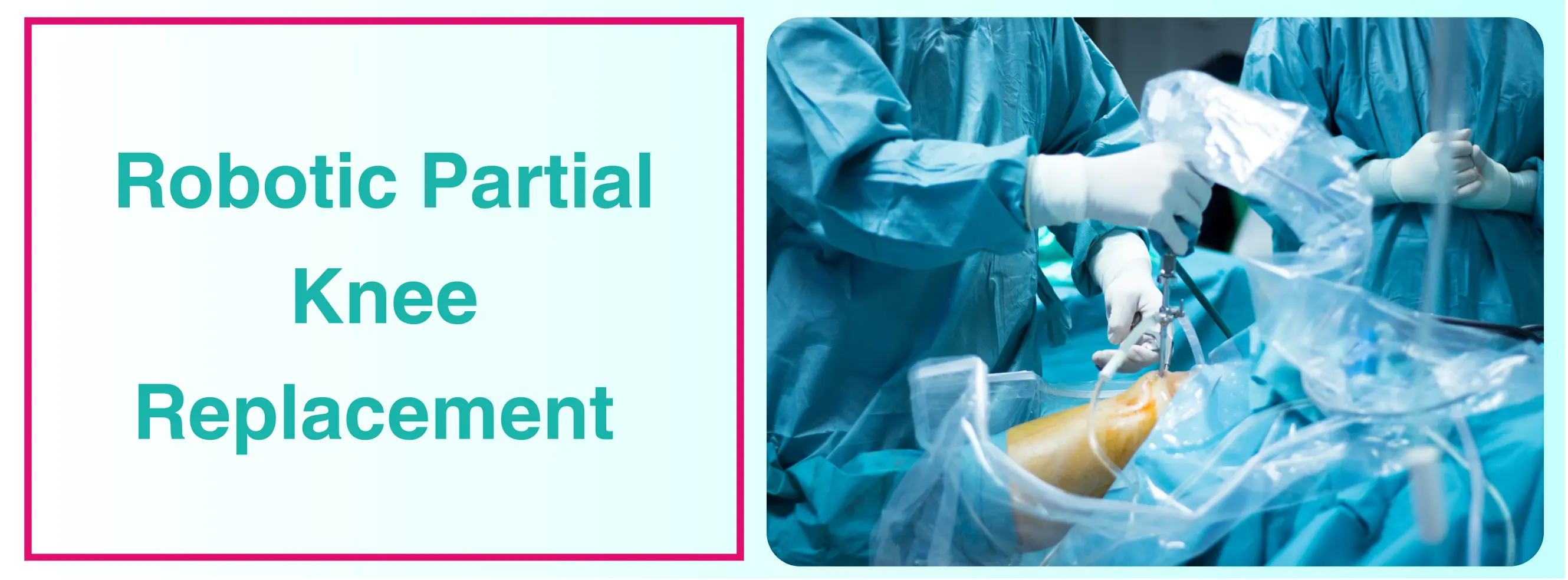
Partial Knee Replacement, also known as unicompartmental knee replacement, is a surgical procedure that is used to cure arthritis pain and affected portions of the knee joint. This surgical procedure focuses on giving relief to pain to patients by replacing the damaged parts of the knee fragments with artificial implants and by restoring mobility and making the knee back to functioning.
During the procedure of partial knee replacement, the surgeon, with the help of medical equipment, removes the damaged cartilage and bone from the affected compartments of the knee and replaces them with artificial components. These artificial components are made up of metal, plastic, and ceramic that take place at natural joints successfully and give the proper stability and functioning.
With the advancement in the medical industry and the introduction of new technologies, robotic technologies have revolutionized the total structure and working pattern of orthopedic surgery. Thus, robotic systems are now used in partial knee replacement surgeries. In partial knee replacement surgeries, robotic systems, with the help of robotic arms, assist the surgeons in proper planning and execution during and after the surgery.
The process of partial knee replacement begins with the help of robotic-assisted navigation by taking CT scans of the knee and giving a 3d image of the knee joints. These images help in creating a virtual model of the knee, which helps the surgeon to asses the damaged parts of the knee fragments completely and plan the proper implantation steps and procedure. With the ongoing surgery in the process, robotic systems provide accurate time information and feedback to the surgeon, which helps ensure proper accuracy and consistency in the surgical procedure.
Among many advantages of using robotic-assisted systems in surgical procedures, one of the significant advantages is it helps to preserve the unaffected bone and tissues which are there in the knee joints with the affected knee fragments. With the help of these systems, surgeons precisely remove only the affected bones and fragments from the knee joints. This preservation of unaffected parts of bones and tissues helps in improving the functioning of knees, in quick recovery and getting a natural feeling after the surgery, even with the presence of artificial components.
The accurate alignment of the implantation plays an essential role in its longevity and proper functioning for many years. Robotic-assisted partial knee replacement also helps surgeons achieve the proper implantation and alignment of the knee joints and faceless risk of implantation failures and revision knee replacement surgeries.
The benefits of using robotic-assisted partial knee replacement include small incisions and reduced blood clots, shorter discharging days from the hospital, quick recovery and many other terms compared to the open tradition partial knee replacement surgery. This modern surgical procedure also helps patients to return to their regular working days after surgery very soon.
It is to be noted that not all patients are suitable for taking robotic-assisted knee replacement surgery. Factors such as the severity of the pain, the overall health condition of the patient, and surgeon preferences and suitability are essential terms to identify if the patient is suitable for the surgery or not.

